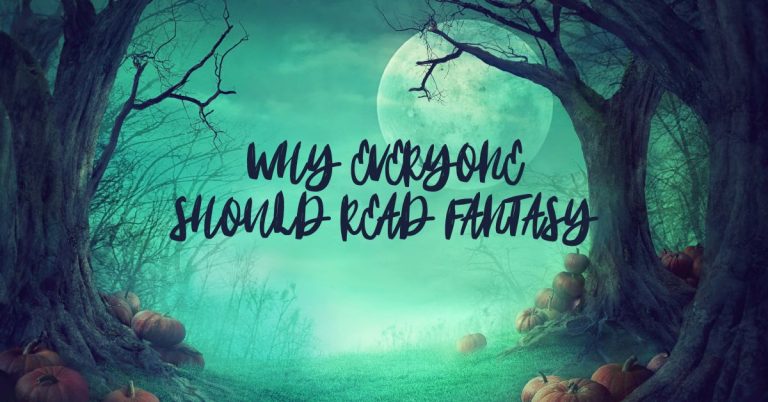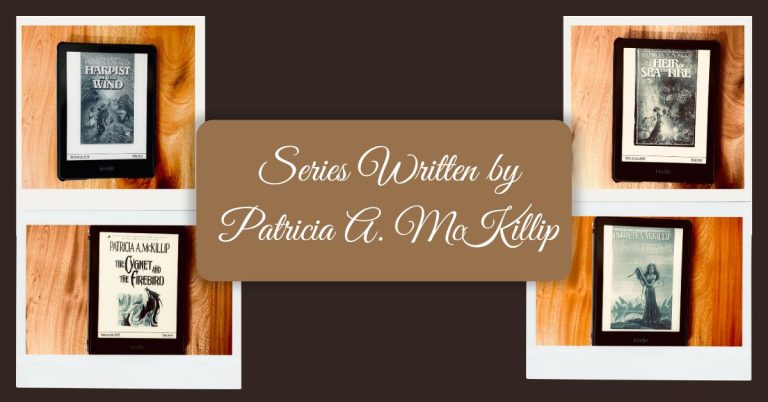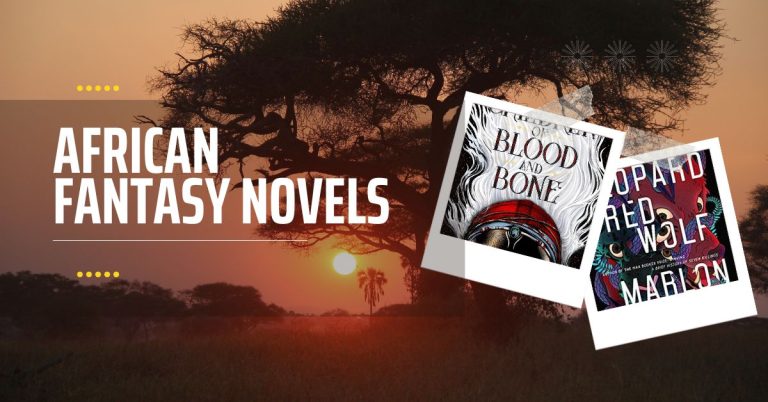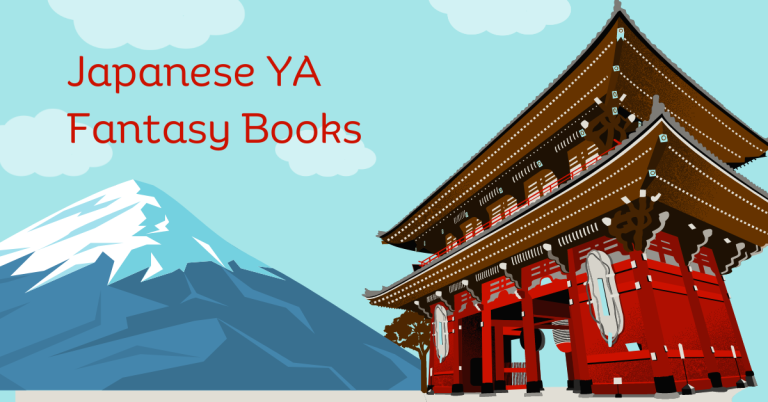The 18 Best World Building Fantasy Books You Should Read
When it comes to fantasy literature, world-building is a spell that authors cast on their words to turn them into doorways leading to different dimensions. It’s not just about the magical creatures, enchanted artifacts, or powerful sorcerers – it’s the immersive landscapes, intricate societies, and rich histories that make these fantasy worlds feel as tangible as the pages you’re turning.
Reading a well-crafted fantasy book is similar to exploring a fascinating new world with its own laws, customs, and cultures. When done right, it leaves you spellbound, with your heart yearning for adventures in these extraordinary realms. But, amidst a sea of books, how do you find the ones that create these intricate, vibrant worlds that will leave you craving for more?
In this post, I have created your personal guide to the fantasy genre, spotlighting the books that don’t just tell you stories but transport you to new worlds. I have curated a list of some of the most imaginative, engrossing, and downright epic fantasy books renowned for their impeccable world-building.
What exactly is fantasy world-building?
World-building is like being the architect of your own universe. It’s the process of creating an entirely new, unique world from scratch. But we’re not just talking about the physical stuff like mountains, rivers, or cities. No, we’re talking about something way deeper and more complex.
Imagine you’re making a pizza. The crust is the geography of the world. It could be a planet with two moons, a kingdom in the clouds, or a city at the bottom of the sea. But a pizza ain’t just about the crust, right?
Next come the toppings – that’s the stuff that brings the world to life. We’re talking about different races or species (like elves or aliens), their cultures, languages, and histories. Then there’s the magic system (if there is one), the social and political structures, religions, technology, the economy… you get the picture. These toppings make the world tasty, rich, and diverse.
Now, the cheese is the story’s character. They live in this world; they’re influenced by it, and, in turn, they influence it. The melting cheese binds all the toppings to the crust, making your pizza – I mean, your world – whole and deliciously immersive!
In fantasy literature, world-building is super important. It’s not enough to just say, Hey, here’s a wizard, and oh, look, a dragon! The best fantasy books make you feel like you could open Google Maps and find your way around Middle-Earth or Westeros.
So, world-building is the magic behind the magic, the secret ingredient that makes fantasy worlds feel real, even when they’re filled with unicorns, witches, or sentient trees.
18 fantasy books/Series with the best world-building
1. The Lord of the Rings by J.R.R. Tolkien
The Lord of the Rings by J.R.R. Tolkien isn’t just a fantasy series; it’s a journey into a world teeming with magic, mystery, and mesmerizing landscapes. Middle-earth, with its rich lore and diverse inhabitants, is a world-building marvel that sets the benchmark for the fantasy genre.
But what makes this world truly captivating is the intertwining of the grand and the humble, the fantastic and the familiar. The One Ring, crafted with dark magic and the centerpiece of the entire saga, is the grandeur. Its threat looms over the entire world, dictating the fate of all its inhabitants.
And then there are the hobbits, the embodiment of simplicity and homeliness, thrust into this grand narrative. Frodo’s perilous quest, aided by the Fellowship, traverses various landscapes, cultures, and challenges, offering us glimpses into the extraordinary depths of Tolkien’s world.
The Lord of the Rings doesn’t just tell a story. It invites you to live in its world, to experience the vastness of Middle-earth, its histories, cultures, and conflicts. It’s a masterclass in fantasy world-building.
2. Nevernight by Jay Kristoff
Prepare to journey to a world where darkness is a luxury, where three suns rule the sky, rarely setting, bathing the land in relentless light. Welcome to the world of Nevernight, where Jay Kristoff showcases his world-building genius. Honestly, this is perhaps the most unique world-building I’ve ever come across in a fantasy book.
In the heart of this world lies a city constructed from the remains of a god, bearing tales of a time gone by. Amidst its eerie lanes hides Mia Corvere, a young girl gifted with the ability to commune with shadows. Her mission? To seek vengeance against those who shattered her life.
To achieve this, she enters the Red Church, a congregation of deadly assassins. As Mia navigates the brutal curriculum of the Red Church, we’re pulled deeper into the labyrinthine world that Kristoff has crafted. This isn’t just a school; it’s a microcosm reflecting the vast, volatile world outside, governed by steel, poison, and subtle arts.
Kristoff’s narrative doesn’t just follow Mia’s journey; it invites us to traverse this distinctive world with her. The intertwining of the sun-drenched land and the shadowy undertones of its society create an immersive, multi-layered world that lives and breathes around the characters.
In Nevernight, Jay Kristoff doesn’t just build a world; he crafts an experience, a thrilling ride through a realm where darkness is scarce, but shadows are plenty.
3. The Witcher Series by Andrzej Sapkowski
Imagine stepping into a world where magic, monsters, and medieval societies are the norm. Where Witchers, the mutant monster hunters, walk the thin line between humans and the beasts they are hired to slay. Welcome to the realm of Andrzej Sapkowski’s Witcher Series, a vast, sprawling universe teeming with diverse cultures, political strife, and supernatural elements.
At the heart of this series is the Continent, a landscape scarred by a cataclysmic event known as the Conjunction of the Spheres. This event brought various mythical creatures into the world, giving birth to the profession of Witchers.
The Continent is an expanse of various kingdoms, each with its distinct socio-political makeup and nuanced cultures. From the pompous courts of Vizima in Temeria to the harsh, frostbitten landscapes of Skellige, each kingdom is a world within itself.
Then, we have the ethereal realms like the eerie world of Aen Elle elves and the deadly, misty dimension of the Wild Hunt. These otherworldly locales add a surreal layer to the already complex world-building, enhancing the fantastical appeal of the Witcher saga.
Sapkowski further enriches the world by creating unique supernatural laws and a system of magic. Sorceresses like Yennefer and mages like Vilgefortz operate within this intricate magic system, making the world feel all the more immersive.
However, Sapkowski’s world-building isn’t limited to grandiose settings and supernatural elements. It’s the underlying commentary on societal issues, racial prejudice, and ethical dilemmas that lend depth and relatability to the Witcher world. The clash between humans, elves, dwarfs, and other species echoes the real-world social divisions, making the world-building nuanced and reflective.
Moreover, the creation of languages and folklore adds authenticity to the world of the Witcher series. The tales of the White Wolf, the Elven tongue, and the Skellige’s Viking-like traditions all contribute to the multi-layered world-building.
4. An Ember in the Ashes by Sabaa Tahir
Have you ever wondered what it would be like to live in a world inspired by ancient Rome but with a cruel twist? A world where freedom is a luxury few can afford, and defiance is a ticket to death? Welcome to the world of An Ember in the Ashes by Sabaa Tahir.
In this world, the Martial Empire reigns with an iron fist. The backstreets are filled with people barely scraping by, where fear looms larger than hope. Here, we meet Laia, a girl turned spy, and Elias, a soldier trained for tyranny but yearning for freedom.
Tahir’s mastery in world-building is evident in how she constructs a brutal and unforgiving society where power reigns supreme. She delves into the underbelly of the Martial Empire, painting a vivid picture of the impoverished backstreets, the grandiose yet oppressive military academy, and the looming threat of retribution.
The world of An Ember in the Ashes feels terrifyingly real. You can almost hear the whispers of fear in the backstreets, feel the rigid discipline of the military academy, and see the oppressive weight of the Empire bearing down on you. As we journey with Laia and Elias, the world unfurls around us in all its glory and terror, a testament to Tahir’s knack for immersive world-building.
5. Malazan Book of the Fallen by Steven Erikson
Steven Erikson’s Malazan Book of the Fallen is more than a story; it’s an exploration of a deeply thought-out world. It’s a world where gods mingle with mortals, ancient races rise and fall, and magic flows through every vein. Welcome to the Malazan Book of the Fallen series, where Steven Erikson takes world-building to staggering new heights.
The Malazan universe is rich and varied, from the vast landscapes-towering cities, bleak wastelands, and everything in between-to the intricate societies that inhabit them. Each detail, each element breathes life into the world, creating an immersive, vibrant setting.
One of the most fascinating aspects of Erikson’s world-building is the intricate magic system. Through warrens, realms of power that double as transportation channels, Erikson weaves a complex web of mysticism that anchors the world of Malazan. The depth and creativity of this system underscore the mesmerizing world Erikson has created.
But a world is only as engaging as its inhabitants, and Erikson’s characters are as diverse and detailed as the world they live in. Mortals, immortals, ascendants, the gods-each character is a thread in the vast tapestry of the Malazan world, their stories intricately interwoven in the grand scheme of things.
6. A Song of Ice and Fire (Game of Thrones) by George R. R. Martin
Ever wondered what it’s like to live in a world where winter can last a lifetime, dragons roam the skies, and the Game of Thrones is a deadly dance of power? Welcome to the world of A Song of Ice and Fire, George R. R. Martin’s magnum opus.
George R. R. Martin’s world-building is a masterclass in immersion and detail. A Song of Ice and Fire invites you into a world so vivid and compelling that you’ll find yourself lost in its enchanting depths, eager to explore every nook and cranny.
The world of Westeros and Essos is a sprawling canvas, brimming with richly-detailed lands, cultures, and histories. From the snow-swept lands beyond The Wall to the vibrant courts of King’s Landing, every corner of the world pulsates with life and intrigue. Martin’s world-building genius doesn’t stop at geography.
The politics, history, and cultures he weaves into the story create an intricate web that keeps readers glued to the page. The series is a rich tapestry of noble houses, each with their distinct traditions and power dynamics. The intricate web of alliances, betrayals, and power struggles among the noble houses lends a sense of realism that grounds the series, making the world feel incredibly tangible.
And then, there’s the magic. Whether it’s the awe-inspiring dragons, the eerie wights, or the cryptic prophecies, these fantastical elements add a layer of mystery and wonder to the world of this epic tale crafted by one of the most brilliant minds in fantasy literature.
7. The Harry Potter Series by J.K. Rowling
When I was a little girl, all I wanted was to receive a letter from Hogwarts, board the Hogwarts Express, and dive headfirst into a world teeming with magic. J.K. Rowling, with her extraordinary world-building, made that dream feel almost possible every time I read a Harry Potter book or watched any of the movies.
Rowling’s wizarding world, from the bustling streets of Diagon Alley to the enchanted corridors of Hogwarts, is a masterpiece of imagination. Each place, steeped in enchantment and teeming with life, drew me in, making me feel like I was a part of this magical universe.
What sets Rowling’s world-building apart is her attention to detail. From the complexities of Quidditch to the nuances of spellcasting, she meticulously crafts the rules and history of the wizarding world, making it feel palpable and immersive.
But it’s not just the magic that makes the world of Harry Potter so special. It’s the values it embodies-the power of love, the strength of friendship, and the courage to stand up for what’s right. These are the elements that breathe life into the world and make it resonate with readers.
The world of Harry Potter is a testament to the power of imagination and the magic of world-building. It’s a world that invites you in, captivates you, and stays with you long after you’ve turned the last page…Always….
8. The Wheel of Time Series by Robert Jordan
Let’s talk about the magic of Robert Jordan’s world-building in The Wheel of Time series.
This epic saga unfolds across a sprawling world, each region bearing its distinct flavor. From the isolated Aiel Waste to the peaceful Two Rivers, Jordan meticulously crafts every corner of the realm, imbuing them with a rich culture and history that make them feel alive.
One of Jordan’s most impressive world-building feats is his handling of the One Power. He splits this magic system into male and female components, each with its unique properties and dangers. This, coupled with the lore of the cyclical Wheel of Time and the prophecy of the Dragon Reborn, adds a layer of depth and intrigue to the narrative.
In the world of The Wheel of Time, every city, culture, and piece of lore feels purposeful and interconnected, creating a sense of continuity and coherence that draws readers in. It’s not just a world that the characters inhabit; it’s a world that lives and breathes alongside them, making the journey all the more engaging and immersive.
9. Empire of the Vampire by Jay Kristoff
When it comes to building mesmerizing and unique worlds in high fantasy, few can hold a candle to Jay Kristoff, an author who pens realms like an architect crafting a masterpiece. That’s why it comes as no surprise that his book, Empire of the Vampire, is nothing short of a world-building spectacle.
In this series, Kristoff paints a world engulfed in perpetual darkness, a chilling dystopia where vampires rule and humans are hunted. Each element, from the eerie Blood Castles to the arcane Silver Saints, is laden with intrigue, making the setting as much a character as the protagonists themselves.
The truly striking aspect of Kristoff’s world-building is his creation of a society gripped by fear and desperation, its people clinging to the faintest hope of survival. The lore of the Daywalker and the mystical Sanctus Silvas adds a layer of complexity and depth, enriching the narrative and making the world feel real and immersive.
With Empire of the Vampire, Kristoff proves yet again why he’s a master of high fantasy. He constructs a world that’s not just a stage for the characters but a living, breathing entity that evolves and captivates with every turn of the page.
10. Strange the Dreamer by Laini Taylor
In Laini Taylor’s Strange the Dreamer, world-building takes center stage, constructing an intricate landscape of myth, magic, and dreams. It’s a world that leaves you in awe, pulls you in, and doesn’t let go.
The story orbits around Lazlo Strange, a war orphan turned librarian who harbors an obsession with the myth-enshrouded city of Weep. Taylor crafts Weep as a city of enigma, steeped in mystery and isolated from the rest of civilization.
What is so captivating about Weep is not just its fabled location but its history: What transpired there? Why the isolation? And the most intriguing question of all is, what exactly did the Godslayer eliminate?
Following Lazlo on his quest, we traverse the labyrinth of Weep, uncovering its mysteries, getting to know its dwellers, and digging into its past. Taylor’s vivid descriptions breathe life into the city, adding a sense of realism that’s rarely seen. The dreamlike figure of a blue-skinned goddess that frequents Lazlo’s dreams brings a fantastical twist, piquing our interest and tickling our curiosity.
Taylor’s world-building in Strange the Dreamer is impressive, to say the least. It’s grand yet intimate, awe-inspiring yet personal. It’s a world that remains etched in your memory long after you’ve turned the final page and fallen asleep.
11. The Girl Who Drank the Moon by Kelly Barnhill
In Kelly Barnhill’s Girl Who Drank the Moon, the world she creates brims with enchantment and the surreal. It’s a world wrapped in magic, but the kind of magic that doesn’t come without its share of darkness.
The Protectorate, where the story starts, is a place draped in sorrow and despair, where every year, a baby is sacrificed to an alleged witch living in the forest. This forest, dense, vast, and bewitching, is itself a character in the narrative. It’s here where the witch, Xan, who is kind contrary to the Protectorate’s belief, rescues and raises these children, feeding them starlight.
When Xan accidentally feeds a child moonlight, imbuing her with extraordinary magic, the world of the story starts expanding. Barnhill intricately shapes a setting that is brimming with fantastical elements like a swamp monster and a perfectly tiny dragon. Yet, she grounds these elements with very human emotions and struggles, like love, sacrifice, and the quest for knowledge.
Apart from the beautiful and poetic writing style, Barnhill’s world-building is both rich and vivid, where the characters, landscape, and magic are intertwined seamlessly, making Girl Who Drank the Moon a captivating read. The world she crafts is a testament to her imaginative prowess, where every detail contributes to creating a fantastical landscape that’s deeply moving and thoroughly spellbinding.
12. Once Upon a Broken Heart by Stephanie Garber
Stephanie Garber, in Once Upon a Broken Heart, weaves a world that’s drenched in magic and mystery, a world where the lines between fable and reality blur and where love can be both a curse and a blessing. As a fan of vampires and poetic writing, this book for me, is a vibrant tapestry of narrative excellence and world-building prowess.
The world Garber creates is enchanting and filled with fantastical elements, the most intriguing being the vampires. They add a delectable twist of darkness and allure to the narrative, embodying the uncanny and the romantic. But it’s not just about the creatures; it’s about the place they inhabit and the rules that govern them. Each detail enriches the world, making it feel vibrant and tangible.
Garber’s poetic writing style does wonders in painting this world. The language she uses is beautiful and evocative, wrapping the narrative in a whimsical charm that enhances the reading experience. It gives a voice to the magical landscape, making the world come alive. In Once Upon a Broken Heart, the world is as much a character as any, a place where each corner hides a secret and every shadow tells a story.
13. His Dark Materials Series by Philip Pullman
This incredible fantasy series takes you to a universe where each human’s soul takes on the form of an animal, called a daemon, that perfectly reflects their character. Philip Pullman’s His Dark Materials, kicking off with The Golden Compass, spins a reality that is enthralling, rich, and unabashedly original.
When it comes to world-building, Pullman’s imagination runs wild as he constructs a multiverse teeming with distinct dimensions that host diverse societies, unique creatures, and new laws of nature. You’d find yourself in worlds where massive, armor-clad polar bears govern icy lands, where witches glide through the sky, and where a golden compass – an alethiometer that reveals the truth.
More than just fascinating characters and grand adventures, Pullman’s world-building delves into philosophical and ethical questions that resonate deeply. It grapples with themes of consciousness, morality, and the notion of the soul. His Dark Materials is a world that is as cerebral as it is magical, sparking curiosity while indulging your sense of wonder.
14. Shatter Me by Tahereh Mafi
For those who’ve been hunting for a dystopian universe where powers are strange, terrifying, and uniquely human, Tahereh Mafi’s Shatter Me is your perfect match. The world Mafi conjures is one that’s chillingly possible – a dystopian future where civilization, as we know it, has crumbled and oppressive regimes rule with an iron fist.
Mafi’s take on superhuman abilities is truly inventive, especially as we see through the eyes of Juliette – our protagonist, who’s been cursed with a lethal touch. This unexpected power lends an aura of unease and mystery, making the reader as desperate as Juliette to understand it.
From derelict asylums to extravagant compounds, Mafi’s world is sharp, grim, and unforgiving. But it’s in this harsh setting that beauty and hope find ways to bloom, creating a stark contrast that heightens the emotional depth of the narrative. Shatter Me is a testament to the resilience of the human spirit amid a world turned upside down.
15. Children of Blood and Bone by Tomi Adeyemi
Have you ever fancied a journey into a world steeped in African mythology and vibrant magic? Well, Tomi Adeyemi‘s Children of Blood and Bone is the ticket. The world Adeyemi weaves is a fascinating tapestry rooted deeply in African culture and traditions, bringing an entirely fresh perspective to the realm of fantasy.
This isn’t your regular run-of-the-mill kingdom; it’s a world that pulsates with the raw, wild magic of the African landscape, filled with mythical creatures, enchanting lore, and magic wielders-majis. The vivid imagery transports you directly into the heart of the African continent, bringing to life the cities, the tribes, the traditions, and the tension between the magic wielders and the monarchy.
But more than just a spectacle of African mystique, Children of Blood and Bone is a riveting exploration of oppression, resilience, and the struggle for freedom. With its African roots, this series brings a refreshing and much-needed diversity to the fantasy genre, making it a standout in the realm of world-building.
16. City of Brass by S.A. Chakraborty
Step into the golden sand dunes of the Middle East with the City of Brass by S.A. Chakraborty. This isn’t your conventional fantasy realm but a vibrant universe steeped in Middle Eastern folklore, where djinn, magic, and mysticism are as common as the desert wind.
The City of Brass is a testament to Chakraborty’s formidable world-building abilities. She creates an immersive universe that combines elemental magic, rich cultural traditions, and mythical creatures all under the mesmerizing Middle Eastern skyline. The city comes alive with the clamor of bustling markets, the allure of ancient lore, and the quiet hum of prayer that resonates in the air.
But the city isn’t just a haven for magic and myths. It’s also a hotbed of political intrigue, familial tension, and power struggles, making for a compelling narrative. The City of Brass, with its rich Middle Eastern roots, offers a refreshing perspective on fantasy world-building, making it a dazzling gem in the genre.
17. The Poppy War Trilogy by R.F. Kuang
This fascinating story doesn’t shy away from painting a vivid, brutal image of war in a world tinged with magic. Drawing from 20th-century China, Kuang creates a fantasy realm that’s unique, raw, and achingly real.
From its politics to its battlefields, this world is steeped in realism, but not without a touch of the supernatural. It’s a place where gods walk the earth, where the lines between the divine and mortal blur in the wake of war. This world is a testament to Kuang’s deft hand at world-building, her ability to blend gritty reality with the fantastical.
The Poppy War Trilogy is a raw depiction of a magical, war-stricken world. It serves as a reminder that fantasy can be as real and as heart-wrenching as our history, making it a standout in fantasy literature for its unique, honest world-building.
18. The First Law Trilogy by Joe Abercrombie
Joe Abercrombie’s First Law Trilogy whisks readers into a realm of grizzled warriors, complex politics, and moral ambiguity that rivals the intricate world-building seen in Song of Ice and Fire. Here, Abercrombie weaves a world that doesn’t gloss over the grit and grime of a medieval-inspired setting.
Just like a perfectly aged whiskey, Abercrombie’s world has a robust depth and a smoky aftertaste of realism. Every city, every battlefield, every back alley is a testament to the author’s meticulous attention to detail. From the lofty towers of Adua to the hardened northern lands, the setting is as real and immersive as any fantasy world can be.
If you’re someone who craves the depth and darkness of A Song of Ice and Fire series, the First Law Trilogy offers a world that mirrors its intricacies. It’s a testament to the potent magic of world-building that is both intricate and immersive.
Final thoughts
Each of the series mentioned here has offered us captivating universes built meticulously and masterfully by their respective authors. From the enchanted lands of Middle Earth to the bustling and mystical streets of Daevabad, from the haunting world of Nevernight, lit by three suns, to the complex realms depicted in the First Law Trilogy, each has its unique flavor and essence that continues to resonate with readers across the globe.
Whether you’re a budding fantasy writer seeking inspiration or a voracious reader on the hunt for your next journey, these books are not just stories but entire worlds waiting to be explored. Each offers an exceptional, detailed, and fascinating approach to world-building, making them some of the best in the realm of fantasy literature.
I hope you enjoyed my list and going to enjoy reading these books. Have a great day.

I am Sanchita, and books are my life force. I live and breathe stories. Getting lost in fictional worlds has been my favorite thing to do for as long as I can remember. Over the course of 20 years, I have read over a thousand books and here I have come to talk about them.






